- Choosing the Right Window
- 1. Sunlight Exposure
- 2. Temperature Control
- 3. Ventilation
- 4. Space Availability
- 5. Accessibility
- 6. Window Coverings
- Providing Adequate Sunlight
- Preparing the Soil
- Planting Bell Pepper Seeds
- 1. Choose the Right Seeds
- 2. Prepare the Seed Tray
- 3. Fill the Tray with Seed Starting Mix
- 4. Plant the Seeds
- 5. Water the Seeds
- 6. Provide Ideal Growing Conditions
- 7. Maintain Moisture and Monitor Growth
- Watering and Fertilizing
- Watering
- Fertilizing
- Maintaining the Ideal Temperature
- 1. Choose a sunny spot:
- 2. Use a thermometer:
- 3. Provide insulation:
- 4. Adjust heating and cooling:
- Controlling Pests and Diseases
- Common Pests
- Common Diseases
- Preventive Measures
- Harvesting and Storage
- “Question-Answer”
- What are the ideal conditions for growing bell peppers on the window?
- Can bell peppers be grown successfully on a window that does not receive direct sunlight?
- What type of potting mix should be used for growing bell peppers on the window?
- How often should bell pepper plants be watered when grown on the window?
- What is the best temperature range for growing bell peppers on the window?
- Can bell peppers be grown on the window during winter?
- “Video” Why Are My Plants Not Growing? Stunted Pepper Plants – Pepper Geek
Bell peppers are a popular vegetable to grow at home, and growing them on the window can be a great way to enjoy fresh peppers all year round. However, not all windows are suitable for growing bell peppers, as they require specific conditions to thrive. In this article, we will explore the ideal conditions for growing bell peppers on the window, including sunlight, temperature, and watering requirements.
Sunlight is the most important factor for growing bell peppers on the window. Bell peppers need at least 6 hours of direct sunlight per day to produce healthy fruits. Therefore, it is essential to choose a window that receives ample sunlight throughout the day. South-facing windows are usually the best choice, as they receive the most sunlight. However, if you have a window that faces another direction, you can still grow bell peppers by using reflective surfaces or supplemental lighting to increase the amount of sunlight they receive.
Another important factor to consider when growing bell peppers on the window is the temperature. Bell peppers prefer warm temperatures between 70-85°F (21-29°C) during the day and slightly cooler temperatures around 60-70°F (15-21°C) at night. If your window gets too hot during the day, you can use blinds or curtains to provide shade. If the temperature drops significantly at night, you may need to use a heater or insulation to keep the peppers warm.
Watering requirements for bell peppers on the window are similar to those for peppers grown in the ground. Bell peppers need regular watering to keep the soil moist but not soggy. It is important to water the plants deeply, ensuring that the water reaches the root system. However, overwatering can lead to root rot and other fungal diseases, so it is important to allow the soil to dry out slightly between waterings. To check if the plants need watering, insert your finger into the soil up to the second knuckle – if it feels dry, it’s time to water.
Growing bell peppers on the window can be a rewarding experience, providing you with fresh and flavorful peppers right at your fingertips. By ensuring that your window receives ample sunlight, maintaining the proper temperature, and watering the plants correctly, you can create the ideal conditions for growing bell peppers on the window. So, why not give it a try and start enjoying your very own homegrown bell peppers?
Choosing the Right Window
When it comes to growing bell peppers on the window, choosing the right window is crucial for their successful growth. Here are a few factors to consider when selecting the ideal window:
1. Sunlight Exposure
Bell peppers require at least 6-8 hours of direct sunlight per day to grow and thrive. Therefore, choose a window that receives ample sunlight throughout the day. South-facing windows tend to provide the most sunlight, making them an excellent choice for growing bell peppers.
2. Temperature Control
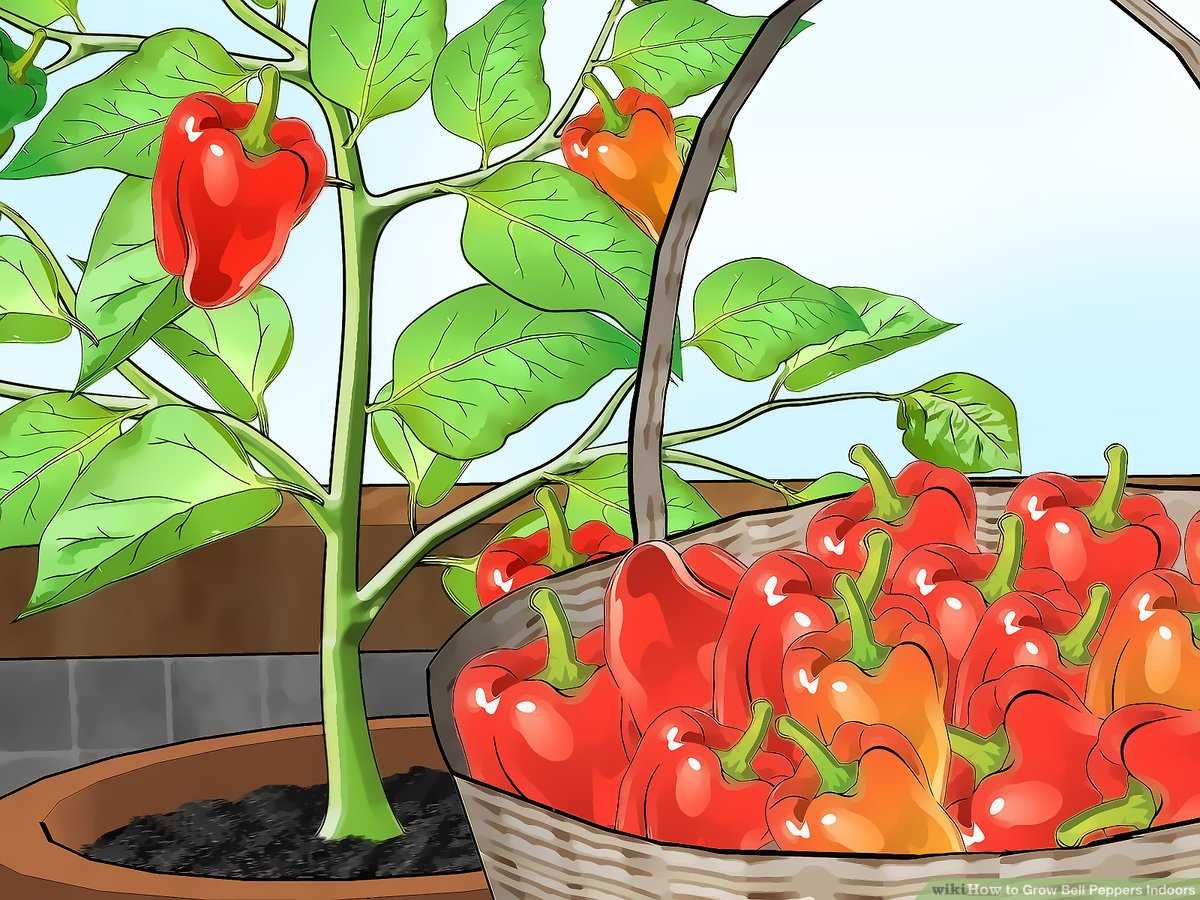
Bell peppers prefer warmer temperatures and are sensitive to cold drafts. Avoid windows that are exposed to extreme temperatures or windy conditions. Look for windows that are well-insulated and can maintain a stable temperature.
3. Ventilation
Good ventilation is essential for bell peppers’ health and prevents the risk of fungal diseases. Choose a window that can be easily opened to allow fresh air to circulate. This will also help regulate the temperature and humidity levels inside the growing area.
4. Space Availability
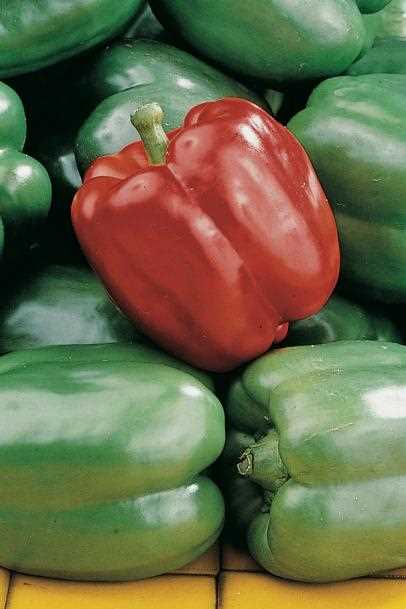
Consider the available space near the window before choosing it for growing bell peppers. Make sure there is enough room to place pots or containers for the plants, and they won’t obstruct the window’s functionality.
5. Accessibility
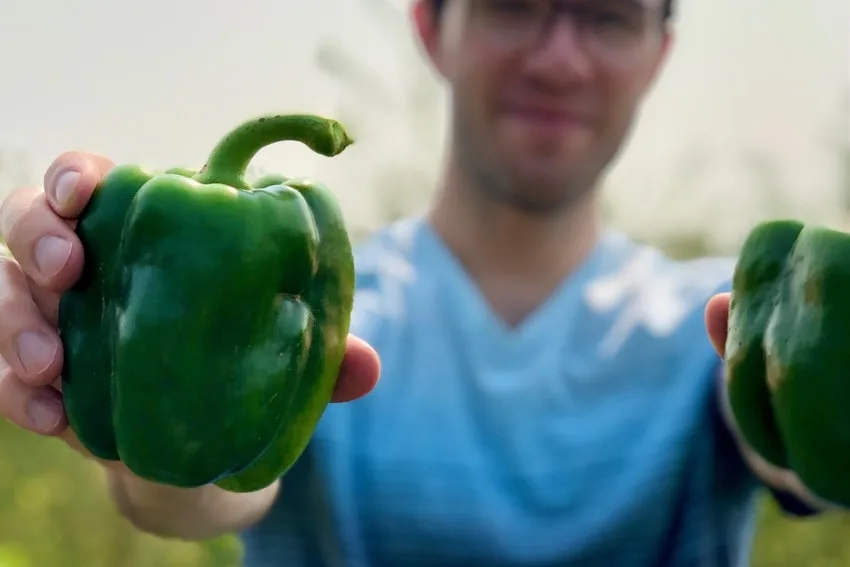
It’s important to have easy access to the window for watering, pruning, and harvesting bell peppers. Choose a window that is easily reachable, especially if you plan to grow multiple plants or larger-sized varieties.
6. Window Coverings
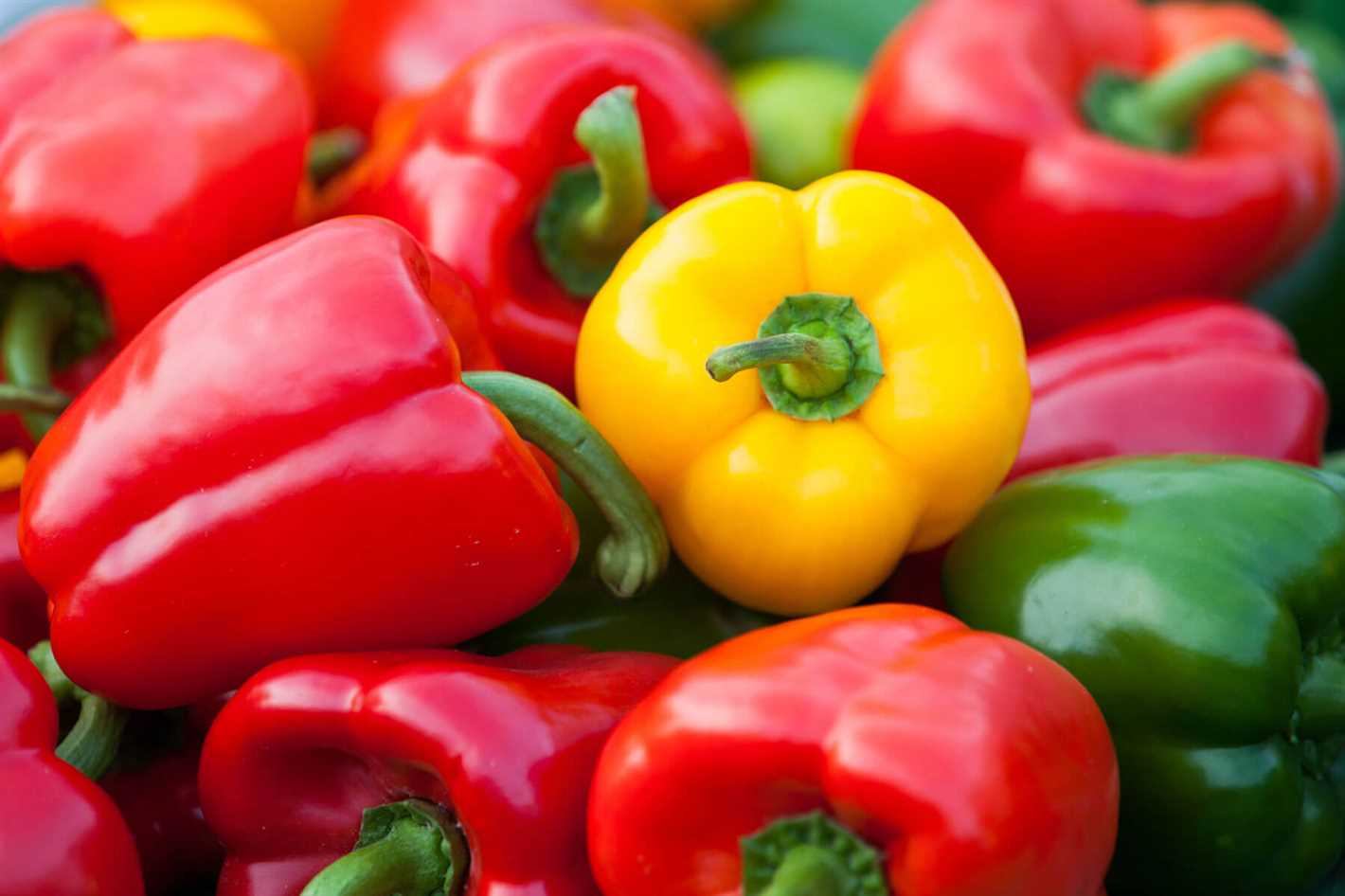
Window coverings such as blinds, curtains, or shades can affect the amount of sunlight that reaches the bell peppers. Consider using light-colored coverings that allow natural light to penetrate while still providing some privacy.
By considering these factors, you can select the right window for growing bell peppers and create an ideal environment for their successful cultivation.
Providing Adequate Sunlight
One of the most important factors for growing bell peppers on the window is providing them with adequate sunlight. Bell peppers are sun-loving plants that require at least 6-8 hours of direct sunlight daily to thrive and produce a good harvest.
When choosing a location for your window pepper plants, make sure it receives plenty of sunlight throughout the day. South-facing windows are usually the best option as they receive the most sunlight. East or west-facing windows can also work, but they may not get as much direct sunlight.
If your window doesn’t receive enough sunlight, you can consider using supplemental lighting, such as grow lights, to provide the necessary light for your bell pepper plants. Place the lights close to the plants to mimic the intensity of natural sunlight. Keep the lights on for 12-14 hours a day to ensure the plants receive enough light.
It’s important to note that too much direct sunlight can also be harmful to bell pepper plants, especially if they are exposed to intense midday sun during hot summer months. This can cause the leaves to wilt, become scorched, or even die. If your window receives intense afternoon sunlight, consider using a shade cloth or sheer curtain to filter the light and protect the plants.
In addition to providing adequate sunlight, make sure to rotate your window pepper plants regularly to ensure even exposure to sunlight. This will help prevent the plants from leaning or growing in one direction.
By providing your window bell pepper plants with adequate sunlight, you will create the ideal growing conditions for them to thrive and produce a bountiful harvest.
Preparing the Soil
Before you start growing bell peppers on your window, it is important to prepare the soil. The soil should be fertile, well-draining, and rich in organic matter. Here are the steps to prepare the soil:
Choose the right container: Select a large container with drainage holes at the bottom. This will allow excess water to drain out and prevent waterlogging.
Select the soil mix: Use a well-balanced potting mix that is specifically formulated for container gardening. This type of soil mix provides good drainage and contains essential nutrients for plant growth.
Add organic matter: Mix in compost or well-rotted manure to enrich the soil. Organic matter helps improve soil structure, retains moisture, and provides nutrients to the plants.
Include perlite or vermiculite: Adding perlite or vermiculite to the soil mix improves drainage and aeration. These materials help prevent waterlogging and create a well-aerated root zone for the bell pepper plants.
Ensure proper pH: Bell peppers prefer slightly acidic soil with a pH range of 6.0 to 6.8. Test the soil pH using a soil testing kit and make necessary adjustments using soil amendments if needed.
Once the soil preparation is complete, your container is ready to plant bell pepper seeds or seedlings. Remember to water the soil lightly after planting and provide regular care and maintenance to ensure healthy growth of the bell pepper plants.
Planting Bell Pepper Seeds
Planting bell pepper seeds is the first step in growing bell peppers on the window. This section will guide you through the process of planting bell pepper seeds.
1. Choose the Right Seeds
Before planting bell pepper seeds, it is important to choose the right seeds. Look for seeds that are specifically labeled as bell pepper seeds. You can find them at gardening stores or order them online. Make sure to choose seeds from a reputable source to ensure high-quality plants.
2. Prepare the Seed Tray
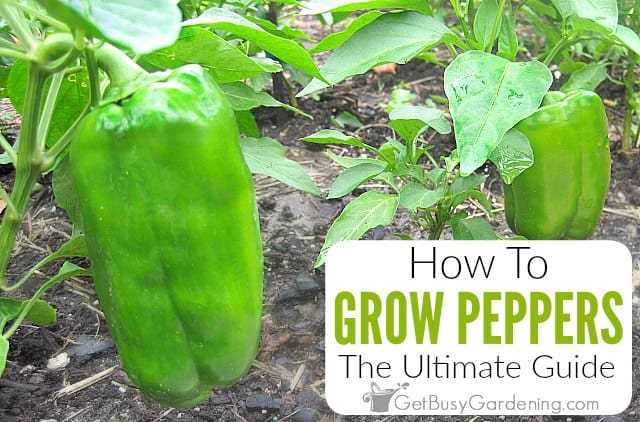
Prepare a seed tray or small pots for planting the bell pepper seeds. Make sure the tray or pots have drainage holes at the bottom to allow excess water to drain out.
3. Fill the Tray with Seed Starting Mix
Fill the seed tray or pots with seed starting mix. This special soil mix is lightweight and provides the ideal growing conditions for the bell pepper seeds.
4. Plant the Seeds
Make small holes in the seed starting mix using your finger or a pencil. Place one or two bell pepper seeds in each hole and cover them lightly with the soil.
5. Water the Seeds
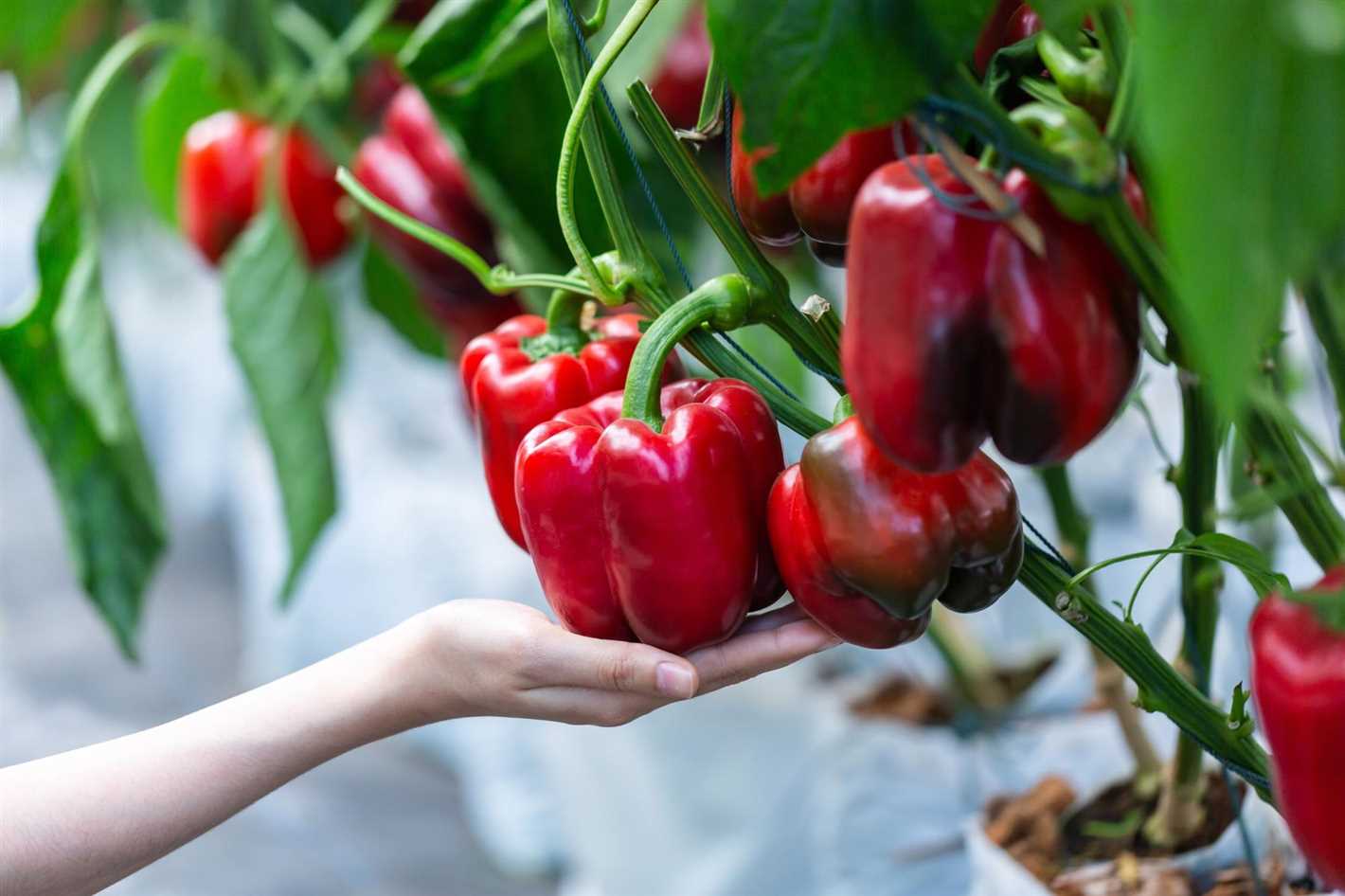
After planting the seeds, water them gently using a spray bottle or a watering can with a fine nozzle. Make sure the soil is moist but not waterlogged.
6. Provide Ideal Growing Conditions
Place the seed tray or pots in a warm and sunny location, such as a south-facing window. Bell peppers need at least 6-8 hours of direct sunlight daily to grow properly. Keep the temperature around 70-85°F (21-29°C) for optimal growth.
7. Maintain Moisture and Monitor Growth
Check the moisture level of the soil regularly and water the seeds whenever the top layer of soil feels dry to the touch. Avoid overwatering, as it can lead to root rot. Also, monitor the growth of the seedlings and make sure to provide support or transplant them to larger pots when they outgrow their current containers.
By following these steps, you can successfully plant bell pepper seeds and start growing your own bell peppers on the window.
Watering and Fertilizing
Proper watering and feeding are essential for the healthy growth of bell peppers. Here are some guidelines to follow:
Watering
Pepper plants require regular watering to keep the soil moist but not waterlogged. Overwatering can lead to root rot, while underwatering can result in stunted growth and fruit production.
Here are some tips for watering bell peppers:
- Check the moisture level of the soil by inserting your finger about an inch deep. If it feels dry, it’s time to water.
- Water the plants deeply, ensuring the water reaches the roots. Shallow watering can result in weak root development.
- Water in the morning or evening when temperatures are cooler to minimize evaporation.
- Avoid water on the leaves as it can promote disease. Use a watering can or drip irrigation system to direct water at the base of the plant.
- Adjust the water frequency depending on the weather conditions. Hot and dry weather may require more frequent watering, while cooler and rainy weather may require less.
Fertilizing
Bell pepper plants are heavy feeders and require regular fertilization to provide them with essential nutrients for growth. Organic or synthetic fertilizers can be used, but it’s important to follow the package instructions for application rates and frequencies.
Here are some tips for fertilizing bell peppers:
- Apply a balanced fertilizer, such as a 10-10-10 or 14-14-14, every 4-6 weeks during the growing season.
- Work the fertilizer into the soil around the base of the plants, keeping it a few inches away from the stem to prevent burning.
- Water the plants after fertilizing to help distribute the nutrients to the roots.
- Monitor the plants for signs of nutrient deficiencies, such as yellowing leaves or stunted growth. If needed, you can supplement with additional foliar fertilizers.
- Avoid over-fertilizing, as excessive nutrients can lead to imbalanced growth and decreased fruit quality.
By following these watering and fertilizing guidelines, you can ensure healthy growth and maximize the yield of your bell peppers.
Maintaining the Ideal Temperature
When growing bell peppers on a window, it is important to maintain the ideal temperature for their growth. Bell peppers thrive in warm temperatures, with the optimum range being between 70°F (21°C) and 85°F (29°C). Here are some tips to maintain the ideal temperature for your bell peppers:
1. Choose a sunny spot:
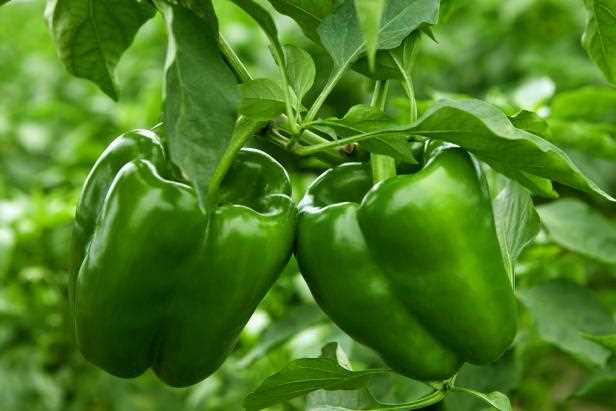
Place your bell pepper plants in a sunny spot on the window where they can receive at least 6-8 hours of direct sunlight every day. Sunlight helps in maintaining the warm temperature required for their growth.
2. Use a thermometer:
Monitor the temperature inside your home regularly using a thermometer. This will help you to identify if the temperature is within the optimum range for bell peppers.
3. Provide insulation:
If the temperature drops below the desired range, you can provide insulation to your bell pepper plants. You can place a plastic sheet or bubble wrap around the pots to help trap heat and maintain a warmer environment.
4. Adjust heating and cooling:
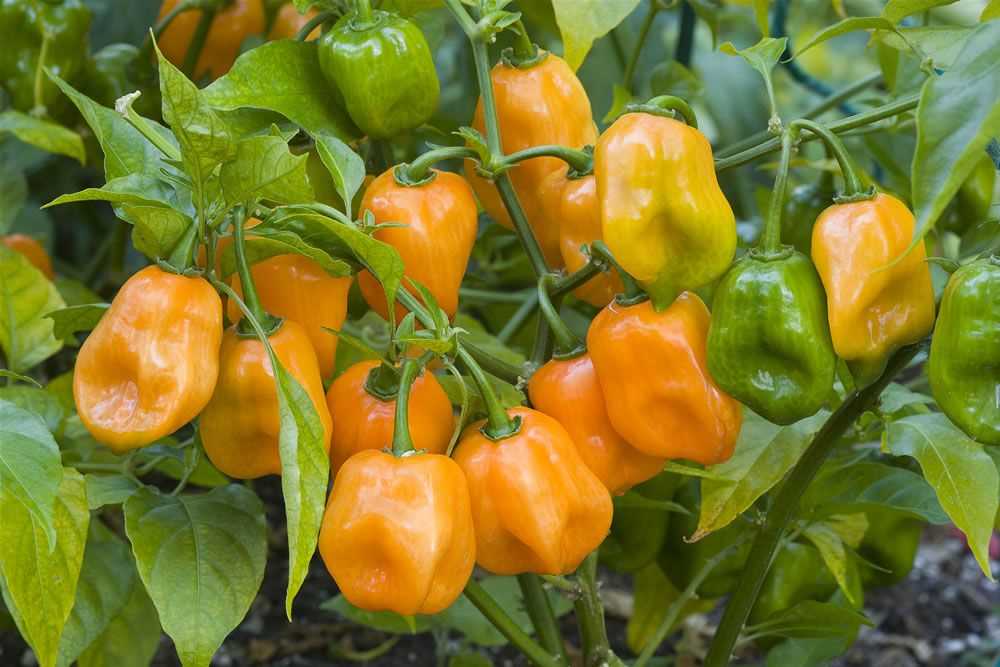
Depending on the temperature outside, you may need to adjust the heating or cooling of your home to maintain the ideal temperature for bell peppers. Use heaters or fans to regulate the temperature accordingly.
Remember that extreme temperatures can be detrimental to the growth of bell peppers, so it is crucial to consistently monitor and maintain the ideal temperature range for their successful cultivation on a window.
Controlling Pests and Diseases
When growing bell peppers on your window, it’s important to be aware of the potential pests and diseases that can affect your plants. Taking preventive measures and identifying and treating any issues early on is crucial for maintaining healthy pepper plants.
Common Pests
There are several common pests that can target bell pepper plants:
- Aphids: These small, soft-bodied insects suck plant sap and can cause curling leaves and distorted growth. Use insecticidal soap or neem oil to control aphids.
- Spider mites: These tiny pests feed on plant juices, causing yellowing and speckling on leaves. Regularly misting the leaves can help prevent spider mite infestations.
- Whiteflies: Whiteflies are small, flying insects that suck plant sap. They can be controlled by using sticky traps or insecticidal soap.
- Thrips: Thrips are tiny insects that feed on plant tissues, causing silver or bronze speckling on leaves. Use insecticidal soap or neem oil to control thrips.
Common Diseases
Bell pepper plants can also be prone to certain diseases:
- Root rot: Root rot is caused by overwatering or poorly drained soil. To prevent root rot, ensure proper drainage and avoid overwatering.
- Leaf spot: Leaf spot disease appears as small, dark spots on the leaves. Remove infected leaves and avoid overhead watering to prevent leaf spot.
- Powdery mildew: Powdery mildew appears as a white, powdery coating on the leaves. Provide good air circulation and avoid overhead watering to prevent powdery mildew.
- Bacterial spot: Bacterial spot causes dark, water-soaked lesions on leaves and fruits. Remove infected leaves and avoid overhead watering to prevent bacterial spot.
Preventive Measures
Here are some preventive measures to keep pests and diseases at bay:
- Inspect plants regularly: Regularly check your bell pepper plants for any signs of pest infestation or disease. Early detection can help prevent spread and minimize damage.
- Maintain cleanliness: Remove any fallen leaves or plant debris around your pepper plants to discourage pests and diseases from breeding.
- Provide proper ventilation: Good air circulation can help prevent the development of fungal diseases. Ensure that your window provides adequate ventilation for your plants.
- Practice crop rotation: Avoid planting peppers in the same location every year as it can lead to the buildup of pests and diseases. Rotate your crops to different areas of your garden.
- Water carefully: Avoid overwatering your bell pepper plants as it can lead to disease development. Water at the base of the plant, preferably in the morning.
By following these tips and monitoring your bell pepper plants regularly, you can control pests and diseases effectively and enjoy a healthy harvest of fresh peppers.
Harvesting and Storage
Harvesting bell peppers is an exciting part of growing them on your window. Once you see the peppers reach their mature size and desired color, it’s time to harvest them. Here are some guidelines for harvesting and storing bell peppers:
- Pick peppers when they have reached their full size and have a shiny, vibrant color. The color will depend on the variety you are growing, but generally, green peppers turn red or yellow once they are fully mature.
- Use a sharp knife or pair of scissors to cut the stems of the peppers, leaving a short portion attached to the fruit. Avoid pulling the peppers off the plant, as this can damage the stem and the plant itself.
- Handle the peppers carefully to avoid bruising. Place them gently in a basket or container to prevent any damage.
- If you have a large harvest, you can sort the peppers by their color and size. This will make it easier to use them in recipes that require specific pepper varieties.
- Store bell peppers in a cool, dry place, such as a pantry or refrigerator. They can last for up to two weeks when stored properly.
To extend the storage time of bell peppers, you can also consider freezing or canning them:
- To freeze bell peppers, wash and dry them thoroughly. Remove the stems, seeds, and membranes. Slice or dice the peppers according to your preference. Place the prepared peppers in freezer bags or containers, and store them in the freezer for up to six months.
- Canning bell peppers involves blanching the peppers in boiling water, peeling off the skin, and packing them in sterilized jars with brine or a pickling solution. The jars can be processed in a water bath canner for long-term storage.
Remember, freshly harvested bell peppers are delicious and nutritious, so enjoy them in your favorite recipes as soon as possible!
“Question-Answer”
What are the ideal conditions for growing bell peppers on the window?
The ideal conditions for growing bell peppers on the window include providing them with at least six hours of direct sunlight, a well-draining potting mix, regular watering, and maintaining a temperature range of 70-85°F (21-29°C).
Can bell peppers be grown successfully on a window that does not receive direct sunlight?
Bell peppers generally require at least six hours of direct sunlight to thrive. If you have a window that does not receive direct sunlight, it may be challenging to grow bell peppers successfully. However, you can try using grow lights or artificial lighting to supplement the lack of natural sunlight.
What type of potting mix should be used for growing bell peppers on the window?
It is recommended to use a well-draining potting mix for growing bell peppers on the window. You can either purchase a pre-made potting mix from a gardening store or make your own by combining equal parts of compost, peat moss, and perlite or vermiculite.
How often should bell pepper plants be watered when grown on the window?
Bell pepper plants grown on the window should be watered regularly to keep the soil consistently moist but not soggy. A good rule of thumb is to water them whenever the top inch of soil feels dry to the touch. It’s important to avoid overwatering as it can lead to root rot and other problems.
What is the best temperature range for growing bell peppers on the window?
The best temperature range for growing bell peppers on the window is between 70-85°F (21-29°C). They are warm-season plants and thrive in temperatures that are not too hot or too cold. If the temperature drops below 60°F (15°C), it can stunt the growth of the plants.
Can bell peppers be grown on the window during winter?
It can be challenging to grow bell peppers on the window during winter as they prefer warm temperatures. If the window receives enough sunlight and the indoor temperature can be maintained within the ideal range of 70-85°F (21-29°C), then it is possible to grow bell peppers on the window during winter. However, you may need to provide additional heat or insulation to protect the plants from cold drafts.







